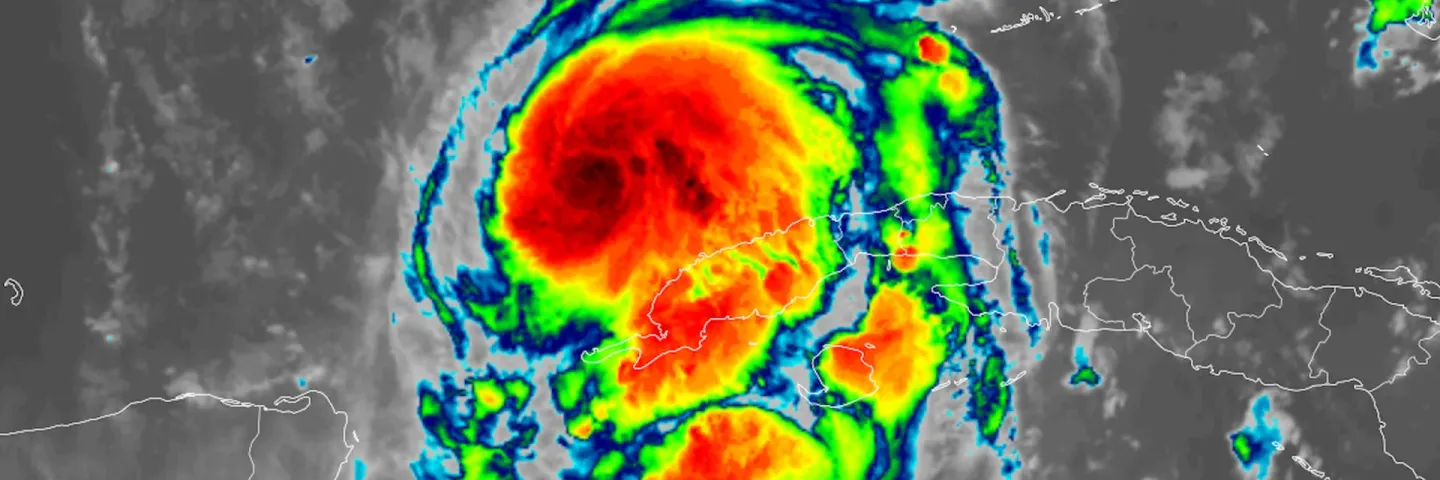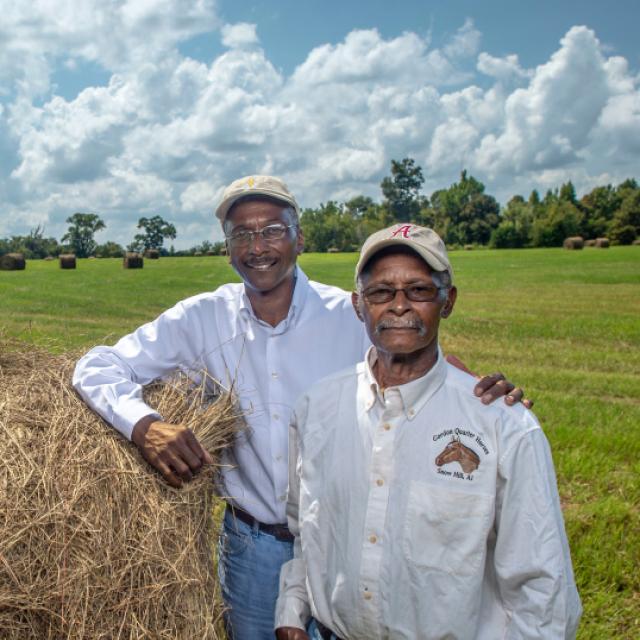
News


Florida NRCS is working to ensure agricultural landowners and producers affected by Natural Disasters receive timely technical and financial assistance.
NRCS provides financial and technical assistance to agricultural and forest producers to improve or protect natural resource conditions while also improving agricultural operations. NRCS can provide payments, through conservation program contracts, for EQIP conservation practices to help agricultural landowners and producers address disaster related resource concerns on their land.
EWP recovery projects begin with a local sponsor or legal subdivision of state or tribal government. Eligible sponsors include cities, counties, towns, conservation districts, or any federally recognized Native American tribe or tribal organization. Interested public and private landowners must work through a sponsor.
Federal agencies, including the U.S. Department of Agriculture (USDA) and the Federal Emergency Management Agency (FEMA), along with numerous Florida agencies and nonprofit organizations will participate in multiple Farm Recovery Centers during the first two weeks of December 2024.
December 3, 2024: Hamilton County
Ernest Courtoy Civic Center, 1129 NW 4th St Jasper FL 32052
December 5, 2024: Suwannee County
UF/IFAS County Extension Building, 1302 11th Street SW, Live Oak, FL 32064
December 5, 2024: Lafayette County
Mayo Community Center, 150 NW Community Circle, Mayo, FL 32066
December 6, 2024: Levy County
310 School Street, Bronson, FL 32621
December 9, 2024: Polk County
W.H. Stuart Center, 1710 U.S. 175, Bartow, FL 33830
December 10, 2024: Hendry County
UF/IFAS Extension, 1085 Pratt Boulevard, LaBelle, FL 33935
December 11, 2024: Lee County
North Fort Myers Recreation Center, 2000 N. Recreation Park Way, North Fort Myers, FL 33903
December 13, 2024: Madison County
UF/IFAS Extension, 184 NW College Loop, Madison, FL 32340
More Information
To learn more about USDA’s disaster recovery assistance for recent hurricanes visit farmers.gov/hurricane.
NRCS Florida hosted a public webinar on October 30, 2024, in support of Hurricane Recovery Assistance to agricultural landowners and producers affected by hurricanes Milton, Helene, and Debby.

Hurricane Milton made landfall Wednesday, October 9, along Florida’s Gulf Coast as a Category 3 storm, bringing powerful winds, deadly storm surge and flooding to much of the state. The cyclone had maximum sustained winds of 120 mph (205 kph) when it landed ashore in Siesta Key, Florida, at 8:30 p.m.
Florida’s central Gulf Coast was hardest hit, including Hardee, Sarasota, Hillsborough and Manatee counties. The hurricane dumped so much rain over parts of the Tampa Bay area that it qualified as a 1-in-1,000-year rainfall event, according to news reports.
All NRCS Florida Offices are open as of 10/18/2024. Locate your USDA local service center.
Find your local USDA Service Center.
What the U.S. government is doing: https://www.usa.gov/disasters-and-emergencies
What DHS and FEMA are doing: https://www.fema.gov/disaster/current
FEMA Map of Florida Designated Areas: Disaster 4828 (10/7/2024):
Hurricane Helene made landfall as a Category 4 hurricane near Perry, Florida, at 11:20 p.m., Thursday, September 26, 2024, with 140 mph winds, the National Hurricane Center reported. Helene marks the first known Category 4 storm to hit Florida’s Big Bend region since records began in 1851. Flooding and tornadoes were a major threat as the storm pushed north through the Big Bend area of Florida into Georgia, the Carolinas, Tennessee, and Virginia. Several Florida counties were under flood and tornado watches. Record-setting rain caused flash flooding throughout the Big Bend region and coastal towns.
Impact on Agriculture, Forestry, and Rural Communities:
USDA Response & Long-Term Recovery:
Hurricane Debby made landfall on Florida's Big Bend at 7 a.m. ET, August 5, 2024, as a Category 1 hurricane with 80 mph winds, the National Hurricane Center said. It was downgraded at 11 a.m. to a tropical storm as it moved toward the Georgia coast and the coasts of the Carolinas. Florida Gov. Ron DeSantis declared a state of emergency for 61 counties. Rain was the major threat as the storm pushed slowly northeast. Several counties were under flood and tornado watches.
Hurricane Idalia made landfall about 7:45 a.m., August 30, 2023, near Taylor County’s Keaton Beach as a Category 3 storm, the National Hurricane Center said. The hurricane center said maximum sustained winds were 125 mph, which is 5 mph below the threshold for a Category 4 storm. Idalia then moved through areas of North Florida in the Big Bend region of Florida, with hurricane conditions expected elsewhere in portions of the hurricane warning area along the Florida Gulf Coast. Strong winds spread inland across portions of northern Florida and southern Georgia. Storm surges occurred up to 12 to 16 feet in hurricane impacted coastal areas. A State of Emergency was declared in 49 Florida counties. Evacuation notices were issued in 28 counties, according to news reports. Idalia is the strongest hurricane to make landfall in the Big Bend region, the nook between the panhandle and peninsula, in more than 125 years. Major agricultural damages include: peanuts, vegetable crops, orchards, chicken houses, hay barns, and fencing. Poultry operations estimate as many as five million chickens died from the storm.
A virtual public meeting was held September 12, 2023, to share information on NRCS emergency assistance (for EQIP and EWP).
Environmental Quality Incentives Program (EQIP) Emergency Assistance for Hurricane Idalia - Application deadline closed November 17, 2023.
Florida EQIP - Emergency Declaration Counties for Hurricane Idalia (2023): Alachua, Baker, Bradford, Citrus, Columbia, Dixie, Gilchrist, Hamilton, Hernando, Jefferson, Lafayette, Leon, Levy, Madison, Marion, Pasco, Pinellas, Suwannee, Taylor, Union, and Wakulla Counties.
EQIP conservation practices eligible for financial assistance in Hurricane Idalia emergency declaration counties (Practice Name, Practice Code & Units):

Emergency Watershed Protection (EWP) Assistance - Application deadline closed October 29, 2023
EWP assistance is available to Florida communities impacted by Hurricane Idalia. NRCS encourages local and state governments to serve as sponsors and request assistance to relieve imminent hazards to life and property caused by the hurricane. For efficiency, NRCS set up an e-mail inbox for potential sponsors to submit requests for EWP assistance at: SM.FPAC.NRCS.FLEWP@USDA.GOV. The deadline to request EWP assistance for this period was October 29, 2023.
Hurricane Nicole made landfall as a Category 1 hurricane just south of Vero Beach, Florida, at 3:00 a.m. Thursday, November 10, 2022, packing maximum sustained winds of 75 mph, according to the National Hurricane Center. Later becoming a tropical storm, the system brought heavy rains and strong winds across central Florida. Landing on Florida’s eastern shores, Nicole is the first hurricane to hit the US in November in nearly 40 years.
Hurricane Ian made landfall early Wednesday afternoon on September 28, 2022, near Charlotte Harbor area in southwest Florida as a Category 4 storm – nearly a Category 5, with winds of 155 mph. Most of the southwest coast of Florida, experienced and life-threatening risk from catastrophic storm surges, wind, and flooding. The storm moved slowly over the peninsula and lingered over central Florida into the early morning hours of Thursday, September 29, 2022, dumping heavy rains with wind gusts up to 50mph. Hurricane winds extended out 45 miles from the center as it made landfall. The northeast area of the state, near St. John’s River, was also impacted heavily as the storm continued its northeast trajectory across the state.as a Category 4 storm with winds of 155 mph.
To expedite Hurricane Ian disaster recovery, NRCS offered early start waivers in EQIP emergency declaration counties, to allow commencement of key conservation practices prior to conservation program contract approval. Producers were asked to file an EQIP application and a waiver before beginning an EQIP conservation practice. The deadline for interested landowners and producers to sign up was November 15, 2022.
Amber Till
Assistant State Conservationist - Financial Assistance Programs
Florida NRCS State Office
Gainesville, Florida
Phone: 352-338-9515 (office)
Email: amber.till@usda.gov
Jason Strenth, State Conservation Engineer
Florida NRCS State Office
Gainesville, Florida
Phone: (352) 338-9559
Email: jason.strenth@usda.gov
The Environmental Quality Incentives Program (EQIP) provides financial and technical assistance to agricultural producers and non-industrial forest managers.
Learn MoreThe Agriculture Improvement Act of 2018 (2018 Farm Bill) includes provisions that address socially disadvantaged, beginning, limited resource, and veteran farmers and ranchers (“historically underserved producers”).
Learn MoreThe 2018 Farm Bill was enacted on December 20, 2018. The Farm Bill continues its strong support for conservation efforts of America’s farmers and ranchers through reauthorization and expanded flexibility of NRCS conservation programs.
Learn MoreContact your local service center to start your application.
Do you farm or ranch and want to make improvements to the land that you own or lease?
Natural Resources Conservation Service offers technical and financial assistance to help farmers, ranchers and forest landowners.

To get started with NRCS, we recommend you stop by your local NRCS field office. We’ll discuss your vision for your land.
NRCS provides landowners with free technical assistance, or advice, for their land. Common technical assistance includes: resource assessment, practice design and resource monitoring. Your conservation planner will help you determine if financial assistance is right for you.
We’ll walk you through the application process. To get started on applying for financial assistance, we’ll work with you:
Once complete, we’ll work with you on the application, or CPA 1200.
Applications for most programs are accepted on a continuous basis, but they’re considered for funding in different ranking periods. Be sure to ask your local NRCS district conservationist about the deadline for the ranking period to ensure you turn in your application in time.
As part of the application process, we’ll check to see if you are eligible. To do this, you’ll need to bring:
If you don’t have a farm number, you can get one from USDA’s Farm Service Agency. Typically, the local FSA office is located in the same building as the local NRCS office. You only need a farm number if you’re interested in financial assistance.
NRCS will take a look at the applications and rank them according to local resource concerns, the amount of conservation benefits the work will provide and the needs of applicants. View Application Ranking Dates by State.
If you’re selected, you can choose whether to sign the contract for the work to be done.
Once you sign the contract, you’ll be provided standards and specifications for completing the practice or practices, and then you will have a specified amount of time to implement. Once the work is implemented and inspected, you’ll be paid the rate of compensation for the work if it meets NRCS standards and specifications.